When staying in Jerusalem a few months back, I had a few goals in mind for my return trip to Israel. One of them was to finally visit Hebron—a city in the West Bank predominantly Palestinian. The city’s history is one of the most complex and controversial in Israel, Palestine and the West Bank and has long been a center of strife.
The previous time I was in Israel, in 2011, I tried to visit Hebron on a tour with Breaking the Silence. They’re a left-wing peace/activist organization, but as I detailed in my previous report from South Hebron Hills, we weren’t able to visit on that particular tour because of recent conflicts.
Eager to see this hotly-contested city for myself, I was invited to take a day trip with Abraham Tours. The full-day tour departs every Wednesday, and while it’s not cheap (ILS 280 — about $75), it’s definitely one of the more interesting tours I’ve been on. As the itinerary explains, Abraham Tours’ day trip to Hebron is a dual-narrative tour. The tour was founded by the group, Jerusalem Peace Makers which is also responsible for an annual “hug” that takes place around the Old City of Jerusalem each year.
Run with Israeli and Palestinian guides (from in the respective neighborhoods, and with the chance to meet locals living in Hebron from both sides of the story, the tour doesn’t try to preach to you, but instead presents you with other people’s stories about Hebron’s history and life there today. The tour provides plenty of opportunities to ask questions and in fact, encourages difficult questions.
A brief introduction to Hebron’s history
Hebron is a religiously historical city. It is the site of the Tomb of the Patriarchs / Abraham Mosque, where several prophets tombs lay. For thousands of years, Hebron was a peaceful city where Jews & Arabs lived and worked together. With the first zionist waves in the late 1800s and early 20th century, the land that is today Israel & Palestine (then it was under Ottoman rule) saw hundreds of riots and clashes between the two cultures. As our tour guide explained, the trouble started when in 1929, because of the riots elsewhere in the land, the Jewish defense forces (a precursor to the Mossad) wanted to arm the Jewish civilians of Hebron. Because they lived peacefully with their Arab neighbors, they turned down the weapons and, as riots spread, eventually the riots did come to Hebron. The 1929 riots saw 67 Jews murdered, though as our guide pointed out, not every Arab was against the Jews. There are as many stories of heroes and saviors as there are terrors and tragedies.
Throughout modern history, Hebron has been the site of more controversy. Following the Oslo Accords peace treaty, Hebron was split in 1997 into two zones: H1 and H2. H1 areas of the city are under full Palestinian control and H2 areas under Israeli control. Today there are approximately 500 Jews living in Hebron, and 250,000 Palestinians.
* * *
My thoughts on Israel and Palestine have been discussed to death on this website. As always, when it comes to travel within controversial areas, I recommend talking to as many people as possible. To ask questions, read reports, read the news, talk to the people living there. The political situation surrounding Israel and Palestine is far from any easy-to-understand narrative. The best you can do is try to understand it yourself by talking to as many people as possible. The Hebron Tour I took was a quick and easy introduction to both sides of the story. And a great chance to speak directly with people who are affected by their politics every day.
Below are my photos from the tour. While I usually limit how many photos I share in a blog, I felt it necessary to show a more complete picture from my day trip, hence the 38 photos in chronological order.
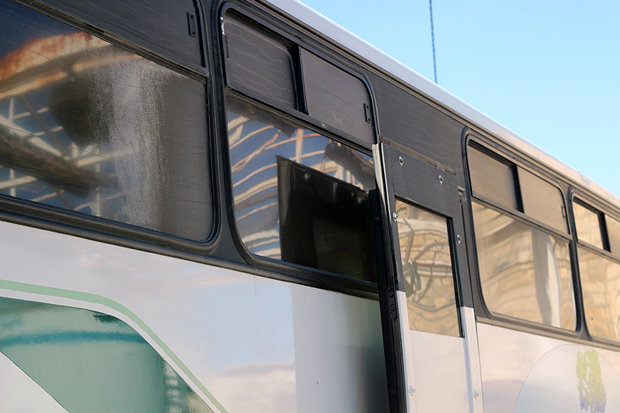
Taking the public bus from Jerusalem, you’ll know from the very beginning that this is a different kind of trip. A young Yeshiva woman read some of her prayers during the bus journey, not to mention the bullet-proof windows on the outside of the bus. It’s not necessarily a dangerous trip—even during these times—but there are certainly some aspects of this journey which make it different from most.
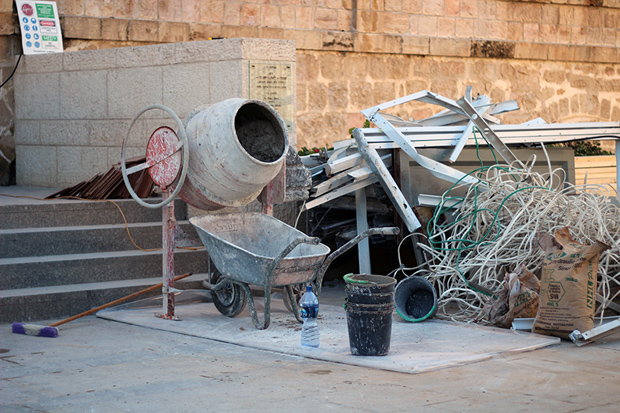
Taking the public bus from Jerusalem means you’re entering the part of Hebron under Israeli control, rather than the larger part of the city which is under full Palestinian control (Area A). There was some construction going on near the Jewish school.
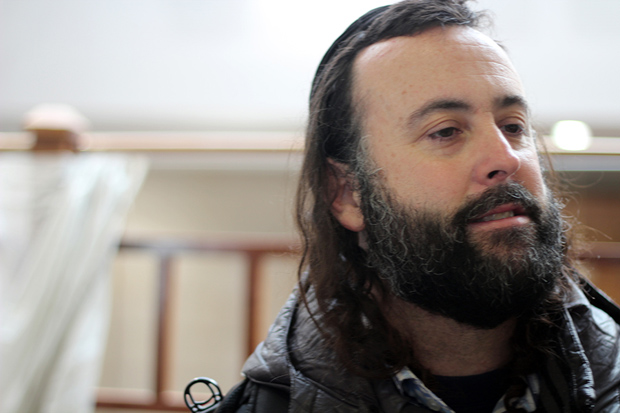
Our tour guide for the day, Eliyahu, was extremely knowledgeable and tried his best to be as objective as possible. He was very open to answering (or attempting to answer) any of our tour group’s questions. Even if I was skeptical of his objectivism at the beginning of the day, by the end he had me convinced!
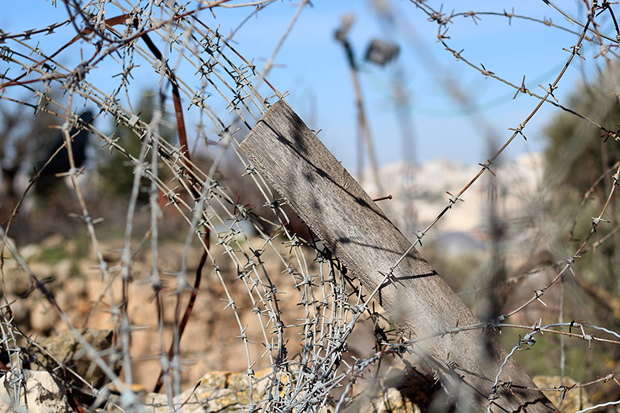
Throughout Hebron, barbed wire and security cameras seemed to be just about everywhere.

Cages and walls block even doorways and staircases in Hebron.
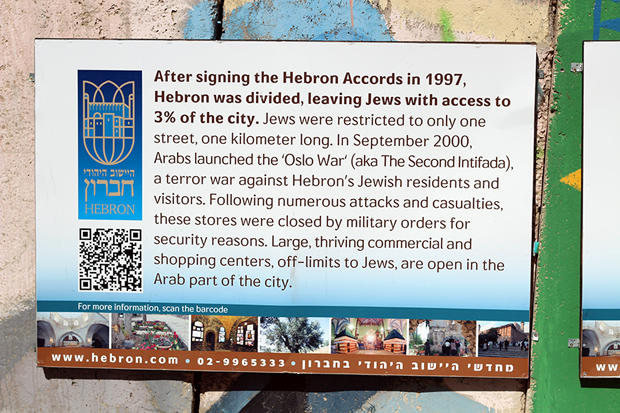
A sign printed by the Hebron settlers explaining the facts as they see them.
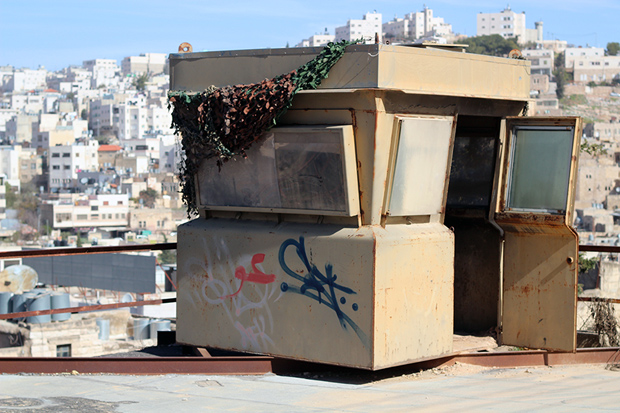
There are 32 checkpoints and 18 military towers in Hebron.
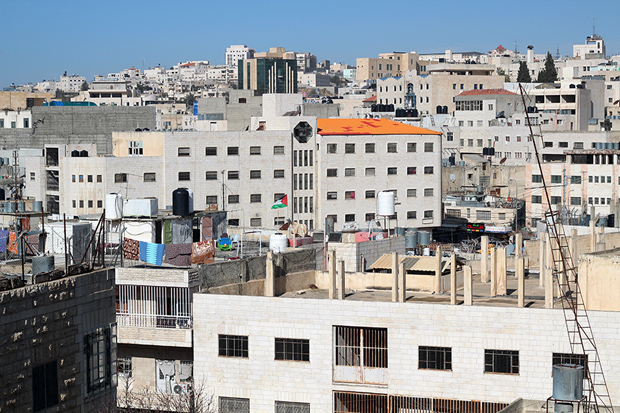
The Hebron Skyline – can you spot the lone Palestinian flag?
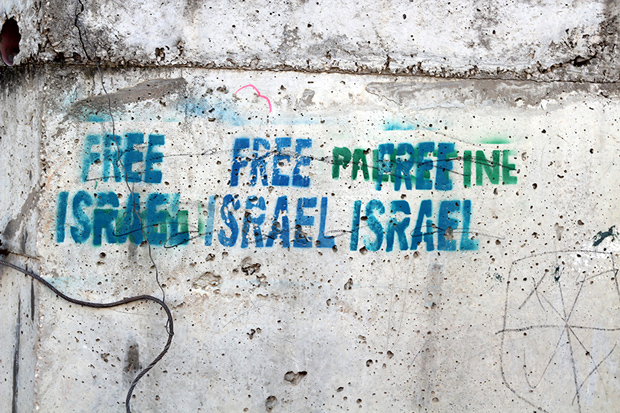
Free Israel or Free Palestine?

The Settler Spokesperson for the Jewish Community of Hebron, David Wilder. In speaking with him, he said a few notable things: that living in Hebron is “considered a privilege” and he wants to “make sure Hebron has a Jewish presence.”
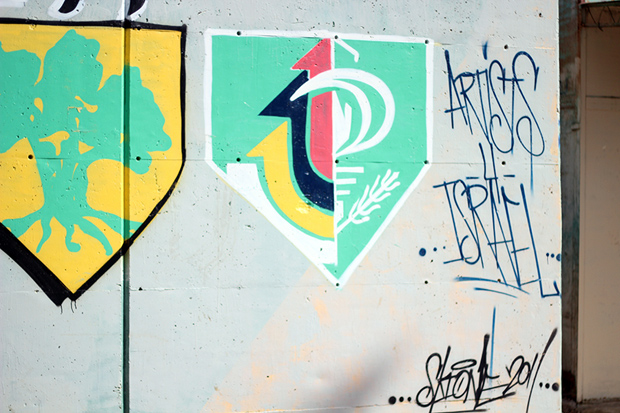
Artists 4 Israel has painted many walls in the Jewish Community of Hebron—often with political objectives
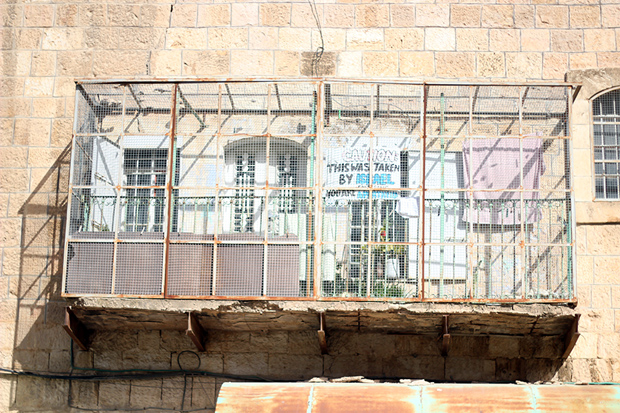
This balcony is on Shuhada Street (see below). The street is home to many Palestinian shops which have been forced to close by the IDF because of security concerns. Because of this, the street has been nicknamed Apartheid Street, though Israelis in return call it Security Street. Only tourists and Jews/Israelis are allowed on the street.

The deserted street. Call it what you want, but it was a depressing sight.
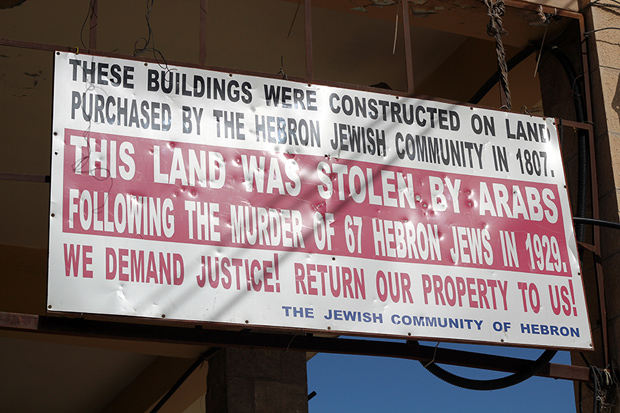
Another sign printed by the Jewish Community of Hebron
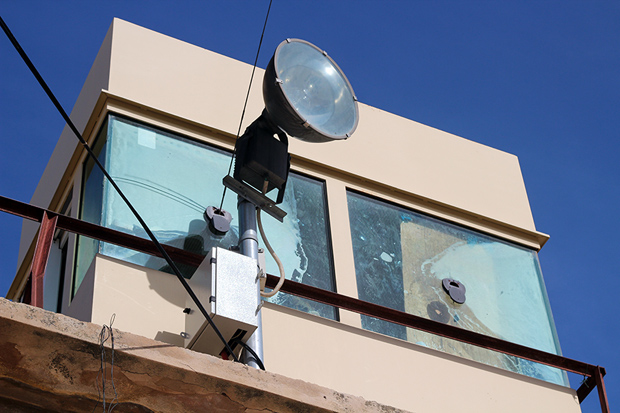
Hebron is home to countless watchtowers and surveillance booths set up by the IDF army. There are over 2,000 IDF soldiers in Hebron.
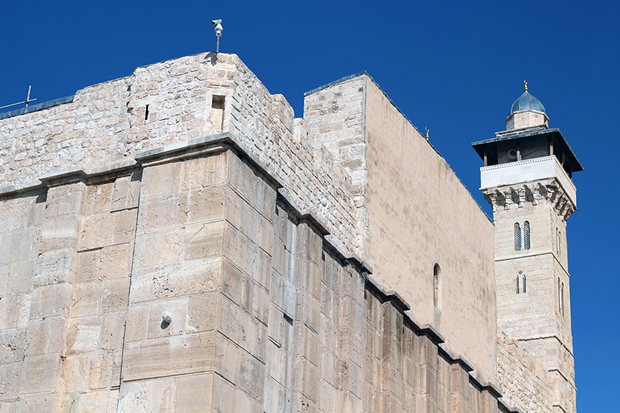
Hebron is much more than the conflict. It’s also one of the most important ancient cities to the Abrahamic religions. This is the outside of the Tomb of the Patriarchs and Matriarchs.
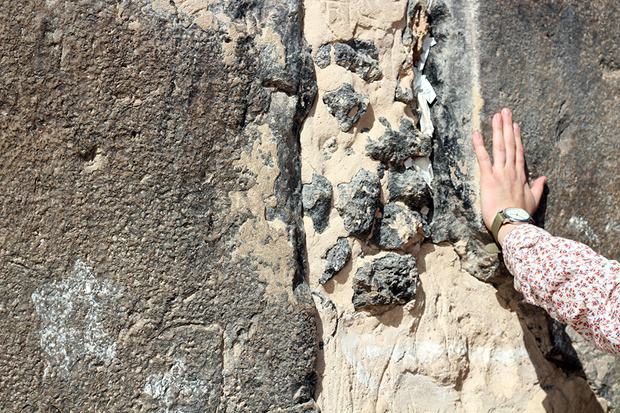
At the corner of the Tomb of the Patriarchs, allegedly once the entrance to the Garden of Eden.
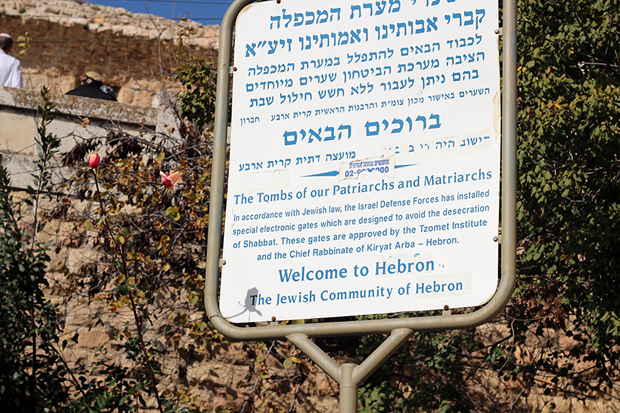
Like most religious sites in Israel, there is extensive security. Metal detectors are also programmed to adhere to strict religious laws.
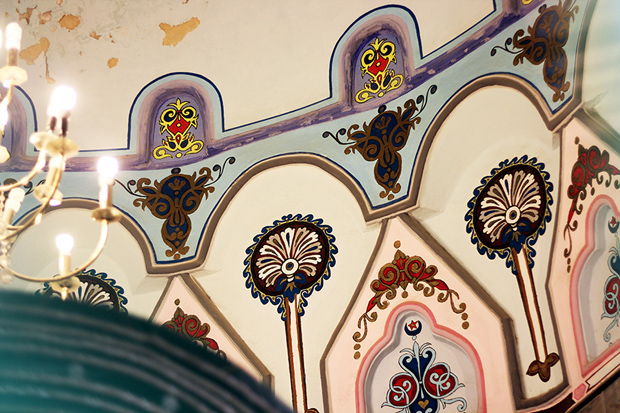
Once inside the Tomb of the Patriarchs & Matriarchs, as a non-Israeli, I was allowed to enter the Abraham Mosque within the very same building.
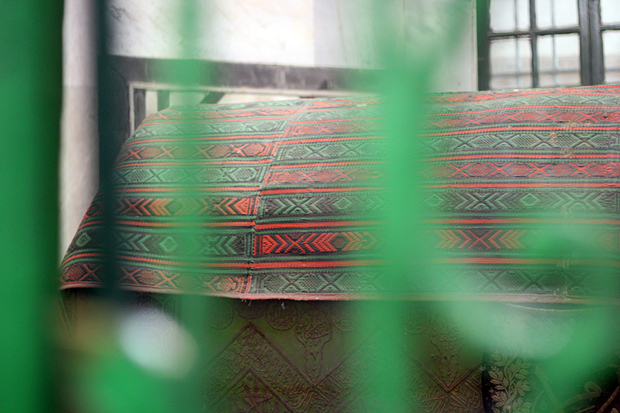
This is the tomb of Abraham, as seen from the Palestinian side of the building. It’s also visible from the Israeli/Jewish side.
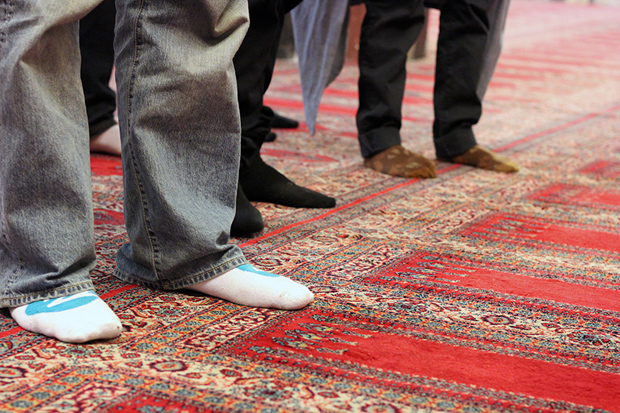
The Abraham Mosque was the site of a massacre against Arabs. A lone gunmen in 1994 killed 29 people and wounded 124 others while praying in the mosque. The massacre in turn set off riots throughout Palestine which led to attacks by IDF soldiers. Like most stories heard in Hebron, there were two sides to this one as well.
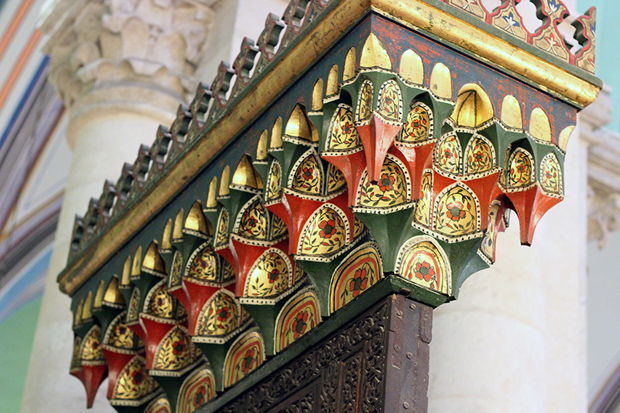
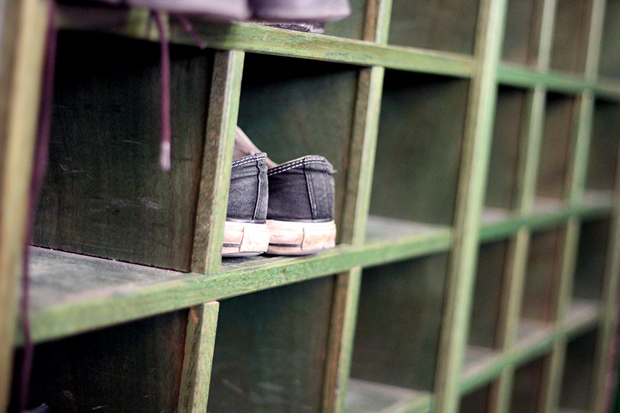
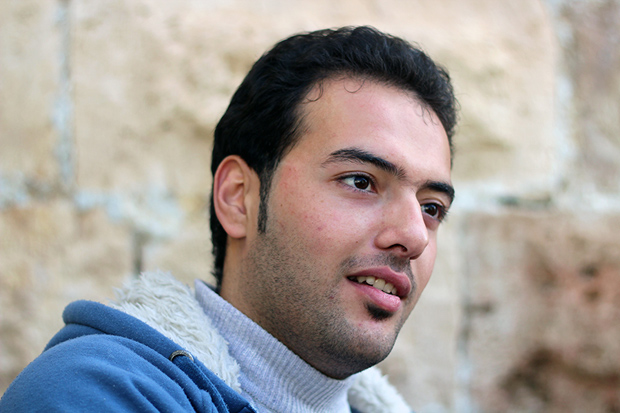
My tour guide through the Palestinian parts of Hebron’s Old City, Mohammed. Working with Visit Hebron, Mohammed was a great source of information and completely willing to speak openly and personally about his life.
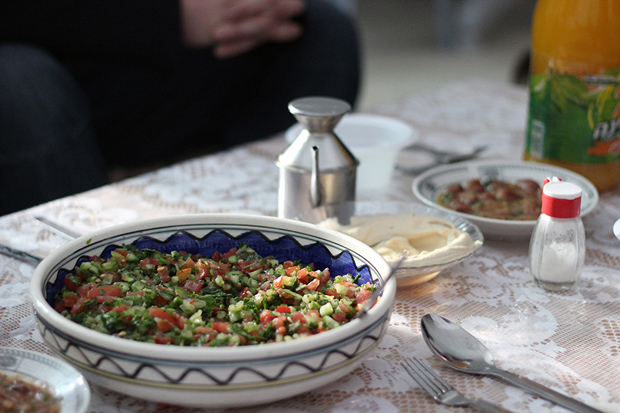
Part of the Hebron tour includes lunch with a Palestinian family. A delicious home-cooked meal!
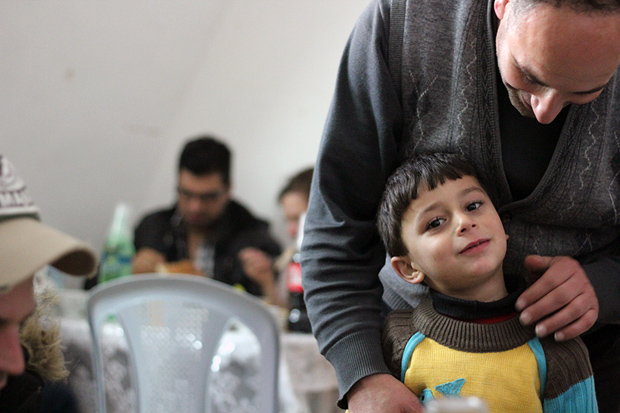
Our host during lunch, Ribki and his son and family.
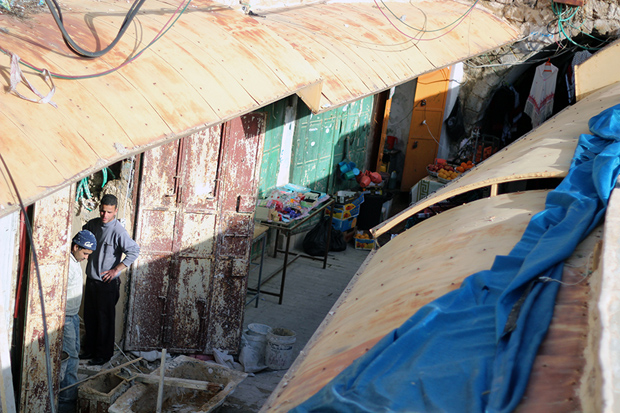
Hebron’s Old City and souq – it was actually much more lively in other areas.
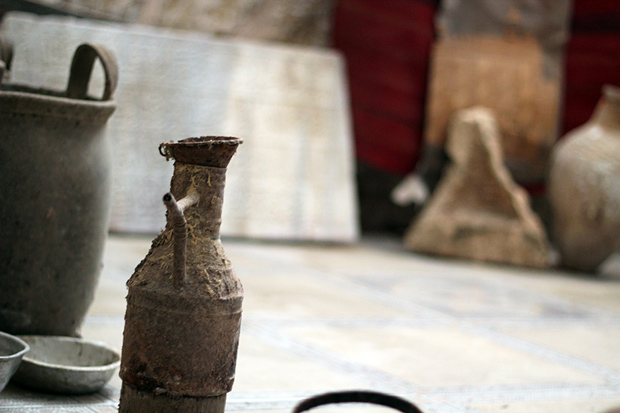
In the Old City’s souq (market), is an ancient bathhouse converted into a museum with archaeological discoveries.
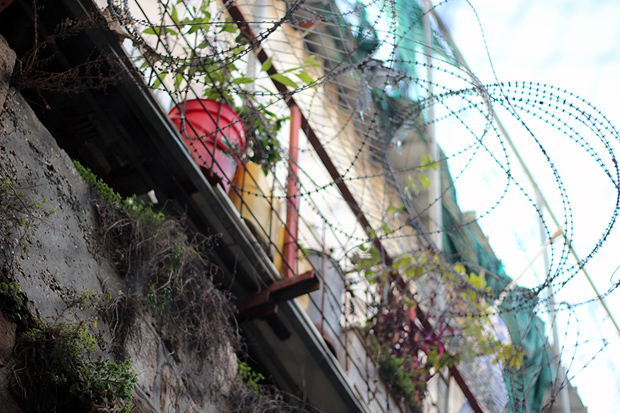
Parts of the souq in the Palestinian side of Hebron (H2 – but off-limit to Israeli settlers & civilians) were surrounded by areas under Israeli control H2. We heard stories about settlers dumping trash and throwing waste on the market below.
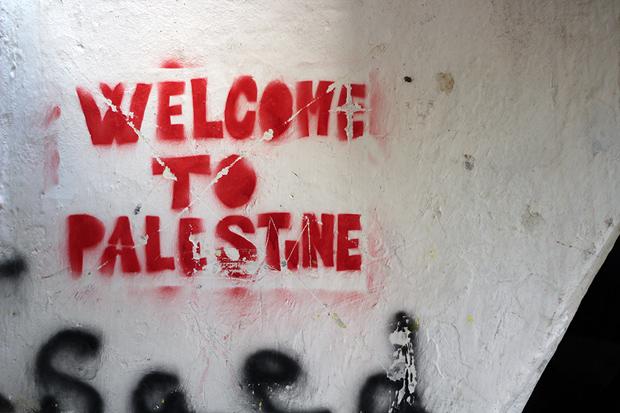
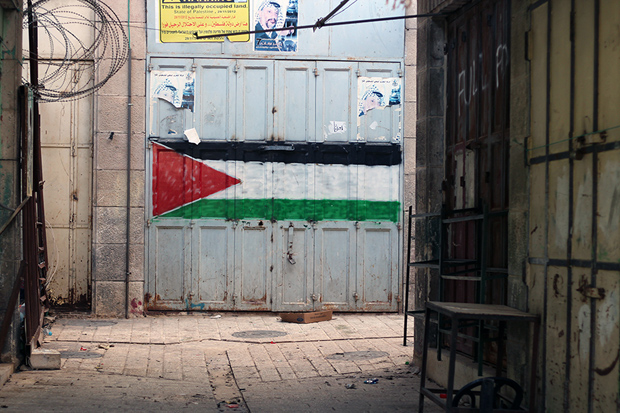
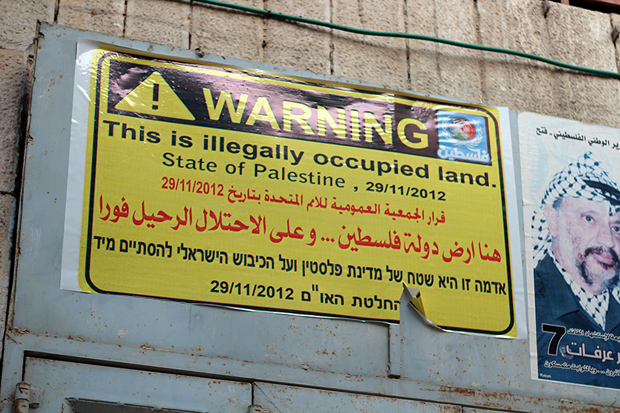
If posted signs were any indication of who belonged to what, things would be even more confusing than they actually are.
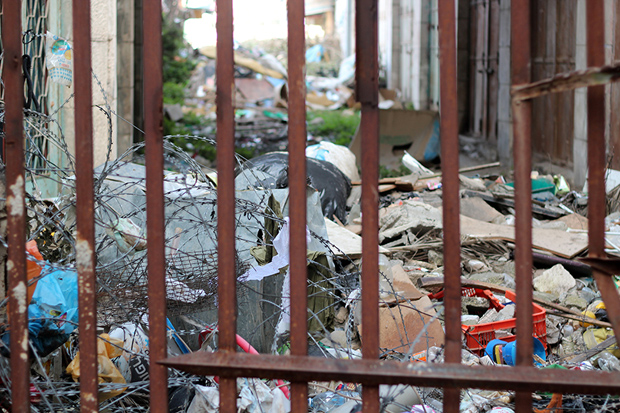
Rubbish in the Palestinian zones of Hebron’s Old City—apparently dumped by a family living above the market on the Israeli/settler side of H2.
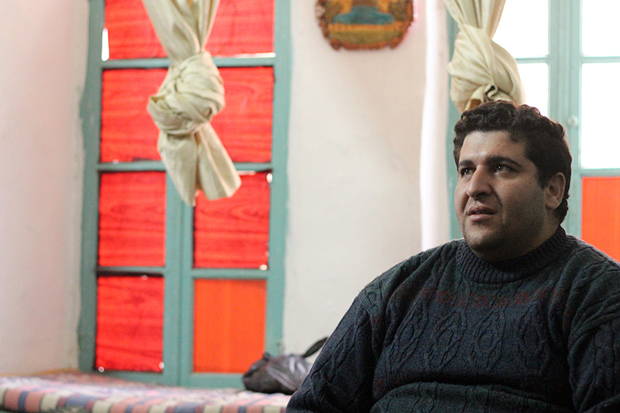
In H1, we had tea with Abed (originally from Iraq) who told us the story of how his pregnant wife was killed just steps away from his home.
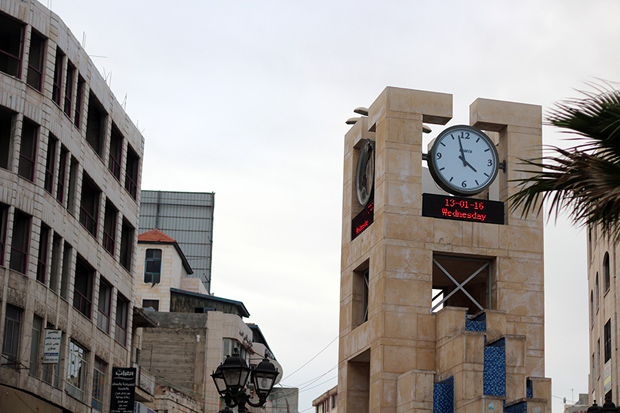
Stepping out of the Hebron Old City souq, you immediately remember that this isn’t just a city tormented by its political situation: hundreds of thousands of people live and work here. With universities and modern infrastructure, there is much more to Hebron than just the conflict.
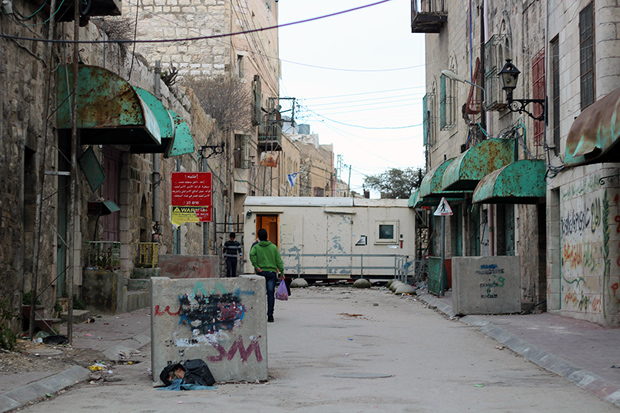
Headed back to the H2 zone to catch our bus back to Jerusalem, it’s necessary to cross through a security checkpoint.
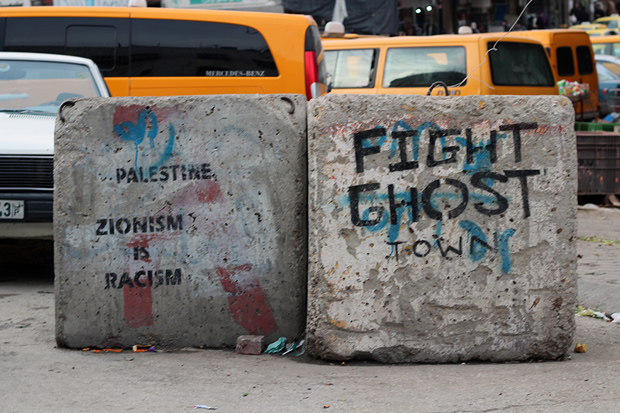
The path leading up to the checkpoint had plenty of pro-Palestinian graffiti.
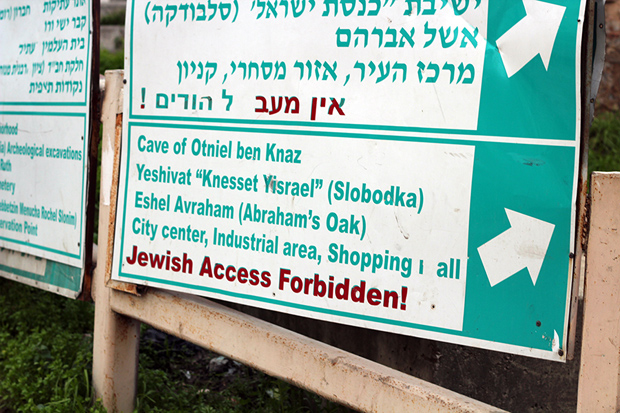
A final sign points out the obvious separation that divides much of the political heart of Hebron. Some areas are controlled by Israelis, some by Palestinians. Jews aren’t allowed in some areas (usually by Israeli law) and Arabs aren’t allowed in others. One of the strangest parts of our tour was when Ibrahim, our Palestinian guide, pointed out an invisible line on the street we were walking on. He wouldn’t be permitted to walk any further despite any visible sign of a line or checkpoint. That was the end of the road for him.
Israel and Palestine are strange countries. It’s a land where foreigners have more mobility than the people who actually live there.
The Hebron: City of Abraham tour departs every Wednesday from Abraham Hostel in Jerusalem. The cost is ILS 280 (approximately $75). More information on the tour website.
If you’re interested in staying overnight in Hebron to discover even more of the city, check the Visit Hebron – Palestine website for hotel & guest house recommendations (available via email request)
Note: This article originally misstated the name of my Palestinian tour guide. There was also some confusion regarding what photos were from the H1 and H2 zones of the Hebron Old City. For clarification, much of the Palestinian areas of the Hebron Old City are actually under Israeli control (H2), though “off-limits” to Israeli settlers and civilians. About 40,000 Palestinians live in the Hebron areas designated H2, under Israeli control.

I’m glad I found this post. I’m heading to Hebron tomorrow on the tour with Abraham Hostel myself and am quite excited! I found your post to be very well written and informative, and am now even more interested to see Hebron for myself.
Hey Sabrina – Glad to hear you’re going on the same tour with Abraham’s. Looking forward to hear your thoughts after the tour. Please say hi to Ibrahim & Eliyahu from me.
This might be a stupid question but were there many women on the tour with you? If so what were they wearing becuase Hebron sounds interesting and a place I want to look into, but I would not want to offend any of the locals by wearing shorts and a tshirt because I’m a girl. You may not know, but what would be appropiate for a woman traveler to wear there?
Hey Valerie,
Not a stupid question at all! There were several women on my tour (it was probably 50/50) and people of all different faiths as well. The only time clothing was an issue was when entering the mosque — and there they had shawls available for tourists who needed them to cover shoulders/etc.
Shorts probably would be okay but you might get some looks in some areas. When booking the tour through Abraham’s I’m sure they could give you some insight as well — but really I don’t think there was much to worry about.
Tragically beautiful.
Hi Adam,
Thank you for this photo essay! I lived in Jerusalem 1991 – 1999, and spent a fair amount of time visiting Hebron and trying to raise awareness about the situation there. To your information about the 1994 massacre in the Ibrahimi Mosque, I feel it’s important to add that when Baruch Goldstein gunned down 29 Palestinians in prayer, the Israeli army, in the ensuing chaos, immediately killed ten more Palestinians. I don’t mean to imply that it was a concerted effort between Goldstein and the army; but it is important because that’s ten more people dead, and it is indicative of how the army there tends to respond — shoot Palestinians first, ask questions later. – Jessi
Thanks for the additional information Jessi and for sharing your interest as well. Glad to hear you’ve actively tried to raise awareness about Hebron.
[…] Hebron political tour of the West Bank’s largest (and most contested) city […]
[…] Through some web surfing, I found this blogger’s perspective of Hebron with lots of […]
[…] Through some web surfing, I found this blogger’s perspective of Hebron with lots of […]
I went on this trip last week and found it incredibly powerful and difficult. Thanks for your photoessay; you saw many of the same people and places as I did, and your photographs are gorgeous! I’ll link to this from my own post about the tour, which should go live tomorrow or so.
[…] Day Trip to Hebron Photoessay by Adam Groffman, which chronicles the same dual narratives trip I took, though with a few different features. […]